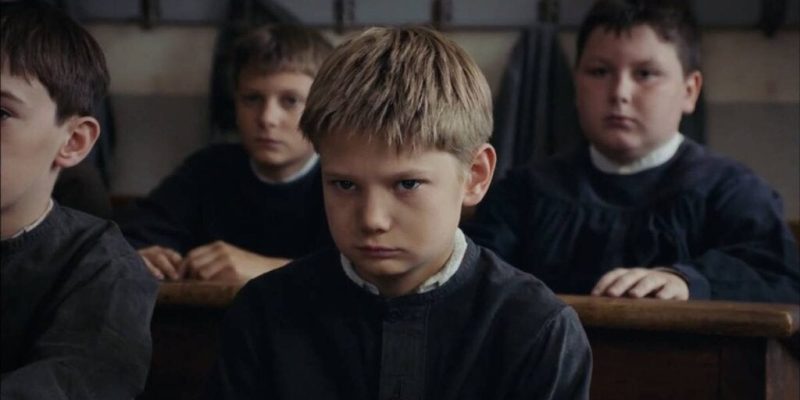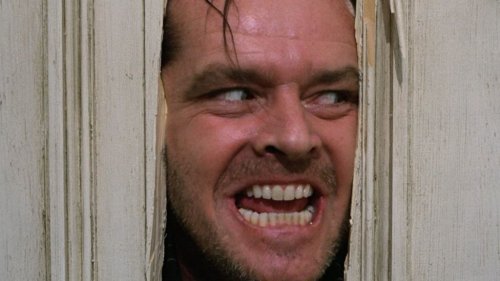Bruno Reidal: Confessions of a Murderer is a brilliant and raw production that offers us an immersion into the mind of a murderer. It also serves as a testimony of rural France at the beginning of the 20th century, when science was striving to understand the injustice of the most sadistic and primary violence. To do this, the movie takes us to a real event that occurred in the Cantal region on September 1, 1905.
Bruno, a young 17-year-old seminarian, murders a 12-year-old boy, decapitating him. The movie tries to find out why. What it discovers is dark and frightening. A medical committee is in charge of deciding whether the boy should be interned or tried. From then, a completely dehumanized voice outlines an uncomfortable but necessary story.
Evil is a complex phenomenon in which social context, education, family, and certain biological components all play a part. Evil involves sadism, psychopathy, and the morbid curiosity that yearns to harm, torture, and kill. Bruno breaks away from society, knowing that there’s something disturbing in him and that he can’t repress his violent needs.
Melancholic, taciturn, cunning, and accustomed to hiding his feelings. That’s how the medical committee described Bruno Reidal in 1905.
Bruno Reidal: the origin of evil?
“Sometimes I feel tormented by thoughts of murder, but I’m not sick, I’m not crazy. I don’t want to be”. The voice and thoughts of the protagonist guide us throughout the entire film. This movie is the remarkable debut by Vincent Le Port, a filmmaker influenced by Michael Haneke and Robert Bresson.
It made a huge impact at the 2021 Cannes Film Festival, where it was presented in a special screening. From that moment, the positive reviews started to grow. The way Le Port probes the human abysses of torment and the drive for violence leaves us fascinated, but also confused. Indeed, it’s never easy to understand the portrait of a criminal.
“Whatever I did, crime scenes were full of charm for me”.
The lucidity behind sadism
When the medical committee asks young Bruno Reidal to tell his life story, we discover he speaks clearly, fluently, and with exquisite literary beauty. In fact, he has a brilliant mind. We soon become imbued with the psychology of evil and its mechanisms, and the eternal conflicts between reason and impulse orchestrated by neurosis and psychopathy.
The director’s reconstruction of the original story is impeccable. It’s not a simple ‘true crime’ story. The viewer is carried away by the thoughts and consciousness of the main protagonist at all times. There’s no external judgment and an ethical distance is maintained at all times. As spectators, we act as witnesses and also judges of this sadistic story detailed with such stark lucidity.
The dissection of a crime in the mind of the murderer
The story of the short life of Bruno Reidal that unravels before the medical committee borders on the psychoanalytic, the philosophical, and the lurid. His childhood was marked by too many siblings and a loving father who died young. His alcoholic and violent mother acted as a catalyst for a mind already drenched in hatred, jealousy, frustration, and boredom.
As a child, he detested his classmates. It didn’t take long for him to want to flee from his environment of poverty by taking advantage of his high intellectual capacities. He became a fellow at a seminary where he nurtured a deep hatred toward other students from the wealthy class. Religious rhetoric was another element he debated as he waged his own conflicts between guilt and faith.
Violence and the desire to harm not only act as a cathartic fantasy in him. The idea of murder haunts him continuously, awakening in him a deep sexual desire. This is something he first discovered on seeing the slaughtering of a pig. Indeed, masturbation is a repetitive element and he experiences sexual pleasure at the thought of others suffering.
The film seeks to make us understand how murderers are created. It brings us closer than ever to the criminal mind, thanks to the verbalization of Bruno’s sufferings. For example, the challenge of a violent mother, a sexual assault, and the impossibility of being able to develop emotionally and intellectually in an unfavorable scenario.
Bruno Reidal, executioner and victim of his abominable impulses
This production from Vincent Le Port is more than just a movie. In fact, it’s an x-ray of terror, an exquisite and tragic portrait of the psychopathic mind struggling against itself. The young man shows tremendous lucidity in his life story, making the monstrous converge with the human.
Although it was useless to fight against his abominable instincts, his despair at having to live with his other deranged self is both monumental and understandable. The visual beauty of the film is immense. It doesn’t matter that the scenes delve into the rawness of a crime and that they’re often violent and uncomfortable.
There’s a certain poetry in every detail, landscape, gesture, and reasoning of the young man. The fact that we see a glimpse of beauty in the anatomy of trauma and unreason produces even more impact on the viewer. Indeed, it’s a must-see debut movie for those who want to understand a little more about how a murderer is born.
In a way, it also reminds us of a series like Mindhunter. They’re also journeys into the dark, journeys from which we often leave with more questions than answers.
Images belonging to the film Bruno Reidal: confession of a murderer (2021)
The post Bruno Reidal: Journey into the Mind of a Murderer appeared first on Exploring your mind.



















Comments